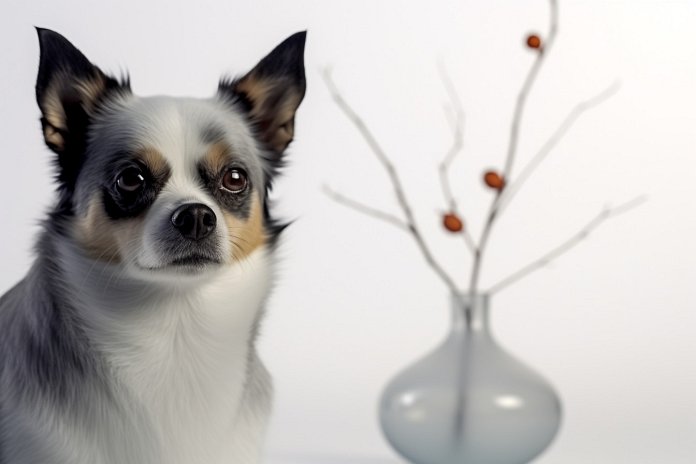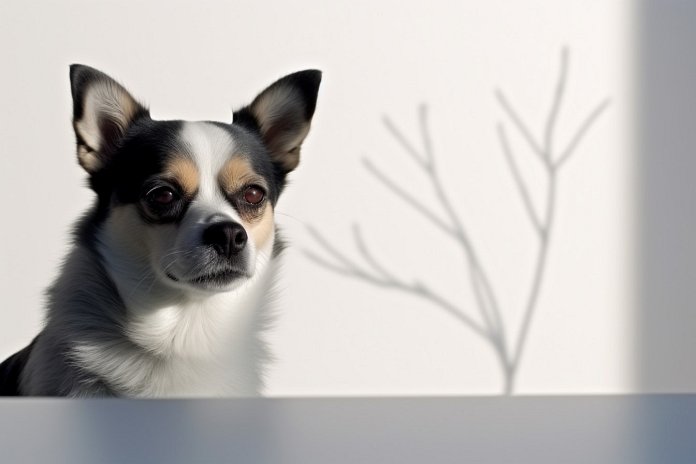
Blue Tzu Heelers are a mix of Shih Tzus and Australian Cattle Dogs. They are known for their friendly and lively nature, but can sometimes be stubborn. As companion dogs, they thrive on regular exercise and human companionship. On average, they live for 10 to 14 years, stand between 11 and 18 inches tall, and weigh 16 to 35 pounds.
With the combination of Shih Tzu and Cattle Dog traits, Blue Tzu Heelers have a shaggy appearance. As a relatively young breed, there is no standardized criteria for them yet. Despite not being recognized by the American Kennel Club, they can still be found on the Designer Breed Registry’s list of hybrids.
Ahead, we look at Blue-Tzu Heeler dog breed, its history, personality, pros and cons of owning an Blue-Tzu Heeler, characteristics, and must-see facts. We will also examine how to care for this breed and more. Prepare for a tail-wagging adventure into the world of Blue-Tzu Heelers!
| Dog Breed | Blue-Tzu Heeler |
| Size | Medium |
| Weight | 11-20 lbs (average) |
| Height | 11-15″ (average) |
| Location | United States |
| Ancestry | Australian Cattle Dog, Shih Tzu |
| Date of Origin | Unknown |
| Group | Companion |
| Life Expectancy | 10-16 years |
| Price | $800 – $1200 |
| Family | Canidae |
| Scientific Name | Canis Lupus Familiaris |
📖 Breed History
The name Blue Tzu Heeler is a combination of the Australian Cattle Dog and the Shih Tzu, two distinct breeds. The Australian Cattle Dog, also known as a Queensland Heeler, Blue Heeler, or Hall’s Heeler, was developed in Australia in the mid-1800s to herd cattle. It is a mix of Collie varieties and Dingoes, and was later crossed with a Dalmatian and Sheepdog to enhance its endurance and work ethic. The breed was officially recognized by the AKC in 1980.
On the other hand, the Shih Tzu is a companion dog with a rich history dating back to 17th century Tibet. It is believed to be a cross between a Tibetan Mountain Dog and a Pekingese. Shih Tzus were highly regarded as “holy dogs” and were owned and bred by royal families during the Ming and Manchu Dynasties. In China, they were known as Lhassa Terriers or Tibetan Poodles when shown as show dogs in the 1930s. Later, they were referred to as Lhassa Lion Dogs. The breed eventually made its way to Europe and North America, where it was recognized by the AKC in 1969 after being presented as gifts from China in the mid-1900s.

🐕 Blue-Tzu Heeler Appearance
The normal appearance of a Blue Tzu Heeler is that of a tiny Australian Cattle Dog with a shaggy coat and certain Shih Tzu characteristics, such as round, close-set eyes. They are often tiny to medium-sized dogs. typical weight ranges from 11 to 35 pounds, and typical height ranges from 11 to 18 inches. They have a medium-length, wavy coat that parts in the center of their heads and along their snout, giving them a Terrier-like appearance. They are often black and white with tan markings or blue (mottled or speckled). Their wavy coat extends to the middle of their medium-length tail. A small, square snout with a black nose, high-set triangular ears that might occasionally droop, and an alert, joyful demeanor are all features of the Blue Tzu Heeler.
| 👀 Eye Color | Brown |
| 🐽 Nose Color | Black |
| 🐕 Coat Color | Blue, Black, White |
⚡ Fun Fact: Blue-Tzu Heeler dogs are a social breed. They enjoy being around people or other animals. This breed doesn’t tolerate being left alone.
🐶 Traits & Temperament of Blue-Tzu Heeler
It is well known that Blue Tzu Heelers are quite sociable and eager to please familiar people and older children. Small children or other canines that could ridicule or mock them are not good for them. The Blue Tzu Heeler is very difficult to teach since it inherits tenacity from both of its parent breeds. These dogs, however, are truly companion animals and have a passionate and devoted attachment for “their” owners. Blue Tzu Heelers are lively, somewhat funny dogs who like playing games and getting some little exercise with their owners. They could become mouthy, excessively animated, or try to “talk” by barking or whining if they don’t get enough attention. Overall, Blue Tzu Heelers do best in loving, sociable homes where they are trained from an early age. If given proper attention and modest, but frequent exercise, this breed may easily adjust to city life and would be at home in an apartment.
🤝 Are Blue-Tzu Heelers Friendly or Aggressive?
Blue-Tzu Heeler dogs are known for being friendly and getting along well with other pets, making them a good choice for households with multiple animals. They also tend to be moderately friendly towards strangers, so they may take a little time to warm up to new people but are generally welcoming. Additionally, Blue-Tzu Heeler dogs are considered kid-friendly, making them a suitable option for families with children.
Moreover, Blue-Tzu Heeler dogs are cat-friendly and can coexist harmoniously with feline companions. They are also dog-friendly, meaning they enjoy the company of other dogs and can be a great addition to a multi-dog household or participate in dog meetups. Finally, Blue-Tzu Heelers are often recommended for elderly individuals, possibly due to their friendly and adaptable nature, making them a good companion for older adults.
This breed is known for being:
- Active
- Playful
- Happy
- Energetic
- Protective
- Alert
- Courageous
- Intelligent
- Friendly
- Outgoing
- Responsive
- Loyal
- Lively
- Gentle
- Aggressive
🐩 Blue-Tzu Heeler Care & Maintenance
Despite not being totally hypoallergenic, Blue Tzu Heelers create less allergies thanks to their coat resembling hair, which they inherited from their Shih Tzu parent breed. By brushing their Blue Tzu Heelers once a week and bathing them once a month, owners may decrease shedding and matting. When washing a pet, owners should pay close attention to checking the ears and eyes. Like all dog breeds, Blue Tzu Heelers should have their nails cut once to twice a month and their teeth washed every day. Although some owners choose to have their Blue Tzu Heelers regularly professionally groomed, cutting around the head, ears, tail, and feet is advised due to their medium-length, wavy coat.
Blue-Tzu Heeler dogs are known for not shedding much. This is because shedding is a normal part of their hair growth cycle. The amount and frequency of hair loss can vary depending on the dog’s overall health and the specific breed they belong to. In terms of grooming, these dogs usually require a bath every 4-6 weeks.
🍖 Food: We recommend 3 cups daily, costing you about $1.20 – $1.40 daily, or roughly $34.00 – $45.00 a month.
🐾 Exercise: Blue-Tzu Heeler dogs need quite a lot of exercise. Daily walks should be on schedule. If you live an active life, this breed can be a good choice for you.
This dog breed requires to be walked for roughly 8 miles per week, which equates to about 45 minutes of physical activity daily. This consistent moderate exercise regimen will help maintain their physical wellness and significantly contribute to their mental stimulation. Consciously setting aside this time for your furry friend can dramatically enhance their life quality, helping them stay energetic, healthy, and mentally alert.
Did you know: Blue-Tzu Heeler dogs have a higher energy level than other dog breeds. If you want a dog for snuggling on the couch, this breed isn’t the perfect choice for you.
❤️🩹 Blue-Tzu Heeler Health & Issues
Some of the major concerns for Blue-Tzu Heeler Dog Breed can be:
- Deafness
- Progressive Retinal Atrophy
- Hip Dysplasia
- Osteochondritis Dissecans
While minor concerns include:
- Ear Infections
- Eye Problems
- Bleeding Disorder
- Hernia
🤧 Important: Is Blue-Tzu Heeler hypoallergenic? No.
✨ Bonus: Check out cool, creative, and funny names for Blue-Tzu Heeler.
⚡ Blue-Tzu Heeler Dog Breed Facts
What makes the Blue-Tzu Heeler a great choice for families with young children?
The Blue-Tzu Heeler is a great choice for families with young children because they are known to be friendly and eager to please older children and familiar adults. However, they might not be great with small children who might tease or taunt them.
Is the Blue-Tzu Heeler breed considered a suitable breed for apartment living?
The Blue-Tzu Heeler breed could adapt to apartment living as long as they receive enough people time and moderate, but regular, exercise.
How much exercise does a Blue-Tzu Heeler require compared to other breeds?
Compared to other breeds, Blue-Tzu Heelers require moderate amounts of exercise.
Is the Blue-Tzu Heeler breed known for being good with other pets?
The Blue-Tzu Heeler breed is not known for being good with other pets, as they might not get along well with other dogs.
What are other low-maintenance dog breeds similar to the Blue-Tzu Heeler?
Some low-maintenance dog breeds similar to the Blue-Tzu Heeler include the Bichon Frise, Cavalier King Charles Spaniel, and the French Bulldog.
What are the common health issues that Blue-Tzu Heelers are prone to?
Common health issues that Blue-Tzu Heelers are prone to include hip dysplasia, allergies, and eye problems.
Are Blue-Tzu Heelers known to be easy to train compared to other breeds?
Blue-Tzu Heelers are not considered easy to train compared to other breeds, as they inherit stubbornness from both of their parent breeds.
Are Blue-Tzu Heelers more prone to separation anxiety compared to other breeds?
Blue-Tzu Heelers can be prone to separation anxiety, especially if they do not receive enough attention and socialization.
Are there any dog breeds similar to the Blue-Tzu Heeler that are suitable for people with allergies?
Some dog breeds similar to the Blue-Tzu Heeler that are suitable for people with allergies include the Bichon Frise, Poodle, and Portuguese Water Dog.
What sizes of dogs similar to the Blue-Tzu Heeler are best for individuals or families with limited space?
Smaller sizes of dogs similar to the Blue-Tzu Heeler, such as the Shih Tzu, Bichon Frise, or Cavalier King Charles Spaniel, are best for individuals or families with limited space.
Is the Blue-Tzu Heeler breed known to be good with children with special needs?
The Blue-Tzu Heeler breed can be good with children, but it is important to ensure proper discipline and socialization. It is recommended to supervise interactions between the dog and children, especially if the children have special needs.
How does the grooming and shedding needs of the Blue-Tzu Heeler?
The grooming and shedding needs of the Blue-Tzu Heeler are moderate. They have a shaggy coat that requires regular brushing to prevent matting, and they do shed moderately. Regular grooming maintenance is necessary to keep their coat in good condition.
We use reliable and publicly available data and resources such as AKC and American Canine Registry to ensure that Blue-Tzu Heeler dog breed information is accurate and up to date. If you spot an error, please don’t hesitate to bring it to our attention.